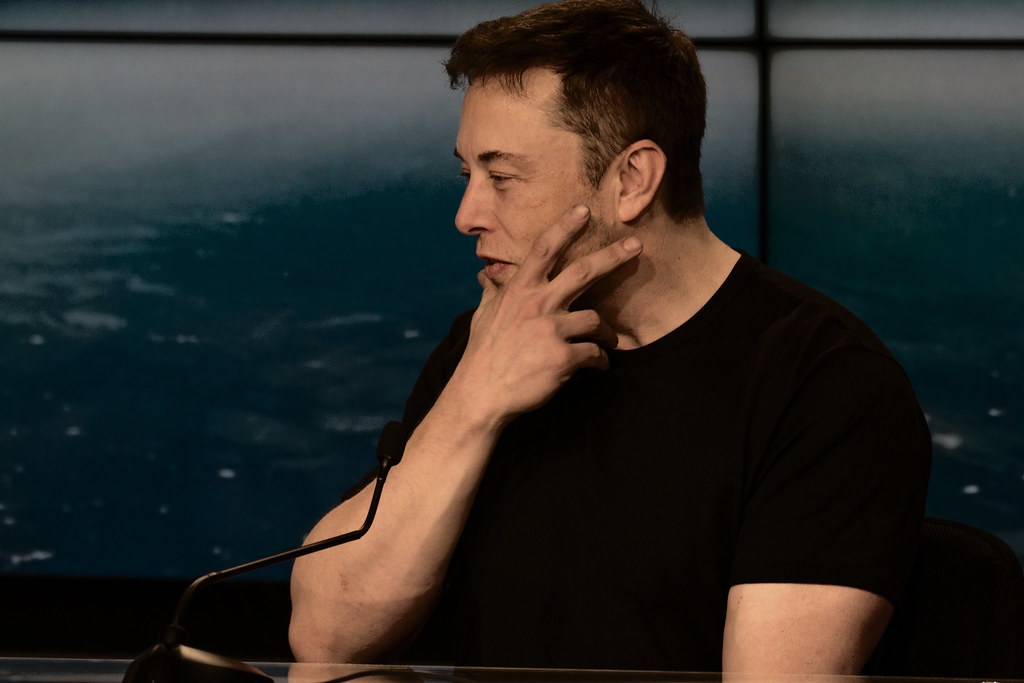That’s why Tesla can skid in finances

The company is in an awkward situation. In practice, it has to choose between drastically discounting prices to drive up demand, with obvious repercussions on gross margins, or suffering a sharp collapse in demand. The analysis of Mark Hawtin, Investment Director of GAM Investments
We don't believe the rapid plunge in the stock price since December (-37.5%) is attributable to Elon Musk 's Twitter tussle, the sale of his Tesla shares, or his controversial public image. In our view, the share price would have crashed anyway. Musk is certainly a genius: hardly anyone had managed to revolutionize so many industrial sectors simultaneously and with the same speed. However, its fame has prompted many investors to give Tesla a higher premium than it deserves on the basis of fundamentals. Too many people have been swayed by investors like ARK's Cathy Wood, who predicted a target price of $1,150 or a market value of $3.5 trillion by 2026 (the market value has fallen from $1.3 trillion at the time of the peak to end of 2021 to $378 billion at the end of 2022).
In addition to the price escalation that effectively began in late 2019, the aura surrounding the company has produced other success factors that are now proving detrimental to Tesla's near-term prospects. In particular, Model 3 and Model Y cars were so popular that they frequently topped the new vehicle statistics in many countries. The long waiting times for delivery and the very low deposit (100-200 dollars) have created a very lively second-hand market for the sale (and speculation) of these cars. In general, Tesla has become famous for having been able to keep the value of its cars high on the used market. This has generated a series of false signals about the actual situation of demand for an electric vehicle that is anything but cheap. At the end of 2019, the monthly payment for leasing a Model 3 was about $390 a month, according to data from Tesla itself.
The two key factors affecting the monthly lease cost were interest rates and residual value. Both factors have turned against Tesla in the past six months. The average price of a used Tesla, according to Edmunds Research, fell 17% in the second half of 2022, compared to a -4% average for all other cars . In conjunction with the sharp hike in interest rates, the monthly lease cost for the Model 3 has more than doubled to over $900 today. In a context where rising rates typically reduce household incomes, the idea of having to pay $900 a month for a Tesla is daunting enough. It is therefore not surprising that (again according to Edmunds) around 30% of used Teslas on sale at the end of 2022 were registered in 2022, compared to 5% of other brands2. The success of the model before the crisis has therefore increased the value in the second-hand market. The success has fueled a robust demand that has now evaporated, with the collapse of the second-hand value. It is the Icarus paradox.
WHAT HAPPENS TO TESLA NOW?
The very robust demand prompted Tesla to ramp up production at new plants in Shanghai, Berlin and Texas just as demand began to slow down. According to Bloomberg data, in the last three quarters more cars were produced than delivered. Stocks are piling up, but customers are dwindling.
The company is therefore in an awkward situation. In practice, it has to choose between drastically discounting prices to drive up demand, with obvious repercussions on gross margins, or suffering a sharp collapse in demand. Tesla has announced price cuts in China and the United States towards the end of 2022.
Based on analyst forecasts, the company will continue to grow over the next two years. Revenues for 2025, according to consensus estimates, are expected to reach $145 billion, up from $80 billion in 2022 . This results in an increase of the market share from around 21% in 2022 to 23% in 2025. If we consider the problem of the leasing payment and the increasingly competitive scenario, it seems an excessive target, both in terms of absolute revenues and as a share of market.
Tesla cars still sell at a higher price than other car brands based on excellent growth and gross margin. However, these indicators could come under severe pressure in the next two years. We don't believe the price difference is justified: Tesla isn't the Apple of cars as some analysts claim. Apple has a 55% share of the US smartphone market, the leading automaker only has a 10% share, and that is Toyota . The network effect that binds many users to the Apple ecosystem does not exist in the case of Tesla. Undoubtedly, the company boasts a database with a huge number of kilometers traveled with electric vehicles, but this in itself is not enough. In our view, Tesla's only real advantage is having made the first move. Its market share is rapidly declining as the competition advances. According to S&P Global Mobility, its market share in electric vehicles in North America fell from 80% in 2020 to 64% in 2022, and the estimate for 2025 is 20% . If we look back 5 or 10 years ago, Tesla doesn't seem like the Apple of the automotive industry to us but it looks perhaps more like Nokia, Ericsson or even Blackberry, which had the advantage of making the first move but in the end they didn't maintained a leading position in the market. (see also: The price war electrifies the car market. USA and China in the lead, the Europeans are not there )
This is a machine translation from Italian language of a post published on Start Magazine at the URL https://www.startmag.it/smartcity/ecco-perche-tesla-puo-sbandare-nelle-finanze/ on Sun, 12 Feb 2023 06:54:36 +0000.
